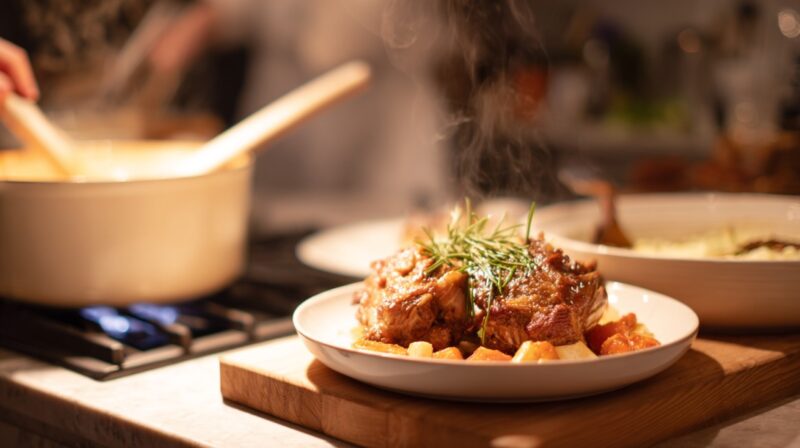8 Simple Ways to Make Dinner at Home Feel Special
Many dinners at home fall into routine patterns: same table, same plates, same quiet hum of a weekday evening.
Yet with a few small shifts, even a regular weeknight meal can feel intentional and memorable.
Little touches in preparation, atmosphere, and presentation can create warmth and delight, turning dinner into an experience worth savoring.
Let’s check them out.
1. Plate the Meal Like a Chef
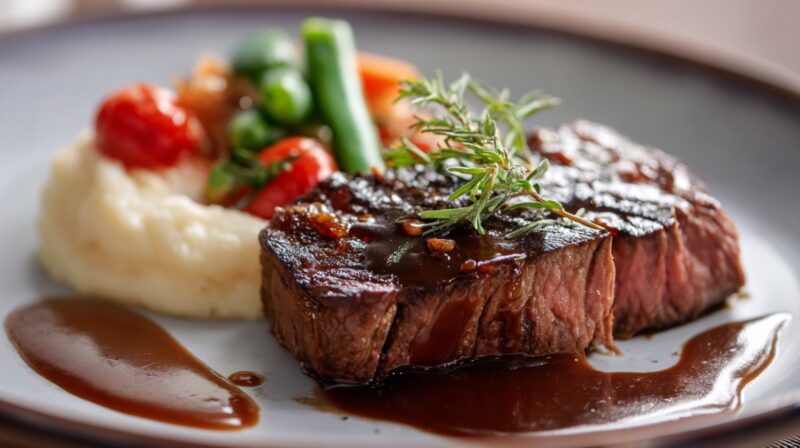
Chris Loves Julia’s creativity in everyday dining shows how visual presentation can transform even the simplest meal.
Plating food individually rather than serving large dishes for everyone to portion out adds an instant sense of occasion.
Instead of piling everything onto one plate, layer and balance textures to create contrast and interest.
- Stack the main protein neatly over grains or vegetables.
- Drizzle sauces in a deliberate pattern rather than pouring randomly.
- Add a sprinkle of herbs or microgreens for color and freshness.
- Use clean, white or neutral plates that frame the food beautifully.
Presentation influences perception; cared-for food feels more inviting and intentional. Even a humble taco or pasta dinner can feel impressive with just a bit of artistry.
Using coupe bowls, matching dishware, or your nicest dinner set reinforces care and presence.
What defines a special meal is not extravagance but the quiet message that someone put thought into making it beautiful.
2. Set an Intention Before You Cook
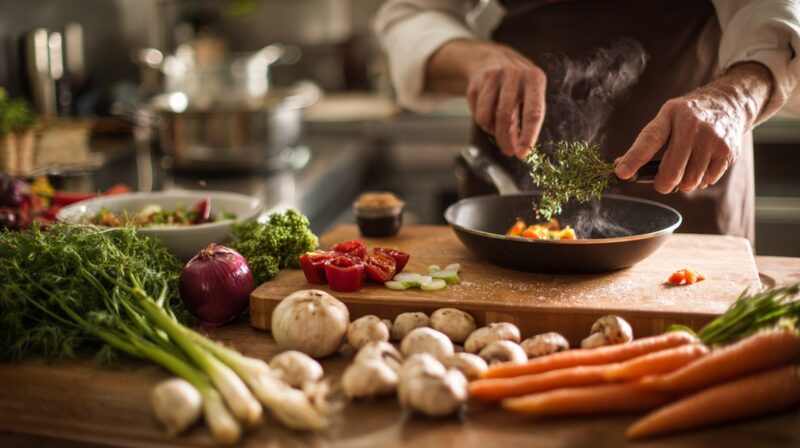
Before picking up a knife or preheating the oven, pause to reflect on what you want the evening to feel like.
Adopting a mindset philosophy that encourages cooking with purpose rather than routine.
Meals can express gratitude, connection, or calm, depending on how they begin.
Ask yourself one guiding question: “What do I want tonight to feel like?”
That single reflection changes everything. It shapes how you move, speak, and share space. You stop cooking as a task and start creating as an experience.
- Writing a short note or menu that defines the evening’s mood.
- Choosing ingredients that match your emotional goal (comforting, celebratory, or nourishing).
- Focusing on connection rather than perfection while cooking.
Intention shifts cooking into an act of care.
When you know why you are cooking, the process becomes lighter, and the table becomes a space of joy rather than duty.
3. Bring a Little “Restaurant” to the Table

Small changes in atmosphere can transform ordinary dinners into elegant experiences.
A candle, soft lighting, or cloth napkins immediately elevate the space and help guests slow down.
- Dim the lights and use candles to soften the environment.
- Add simple centerpieces like rosemary in a mason jar or a small bouquet of seasonal flowers.
- Arrange dishes on rustic boards or a tree stump platter for an organic touch.
- Serve bread, dessert, or appetizers on decorative pimpernel trays for a refined feel.
Effort in presentation and atmosphere communicates thoughtfulness.
Turning your table into a cozy, intentional space redefines what home dining feels like and makes your vegan date rolls look like a simple master piece.
4. Curate the Soundtrack

Music carries emotional weight and can shift the entire tone of a meal.
A soft jazz playlist might bring intimacy, while upbeat acoustic tracks encourage playfulness and conversation.
- “Cooking with Kids” could include cheerful pop and sing-along hits.
- “Date Night In” might focus on slower instrumentals or soulful tunes.
- “Weekend Dinner with Friends” can lean into lively acoustic rhythms.
Sound acts as an invisible guest at the table.
When chosen intentionally, it relaxes everyone, connects moods, and keeps energy balanced.
A simple playlist can make dinner preparation feel like part of the celebration rather than a chore.
5. Limit the Chaos and Plan Ahead
A peaceful dinner begins long before food hits the table. Preparation reduces stress and keeps the experience relaxed.
By washing dishes early, pulling ingredients in advance, and organizing the kitchen, you set the stage for calm.
All three inspiring creators agree that order and readiness help you stay emotionally present.
- Writing a short prep list in the morning to avoid last-minute scrambling.
- Defrosting ingredients early and chopping vegetables before guests arrive.
- Keeping a clean countertop to simplify serving and cleanup.
Small acts of foresight eliminate chaos.
With clutter out of the way, conversation flows more freely, and laughter fills the room.
Planning just a few minutes ahead gives you more space to enjoy the experience rather than rush through it.
6. Add an Element of Surprise

CulinaryCrush encourages adding little moments of delight that break routine.
A hint of surprise brings energy and playfulness to the table.
Creativity, not perfection, defines these moments.
- Creating a themed night like “Mediterranean Monday” or “Taco Tuesday” with a twist.
- Writing a simple menu card or folding napkins in an interesting shape.
- Serving dessert outdoors under string lights or after a family walk.
- Offering an unexpected drink pairing or appetizer before the main course.
Surprises add a sense of discovery and care. They remind everyone that thought was put into the experience, turning dinner into a story worth remembering.
7. Make the Meal Participatory
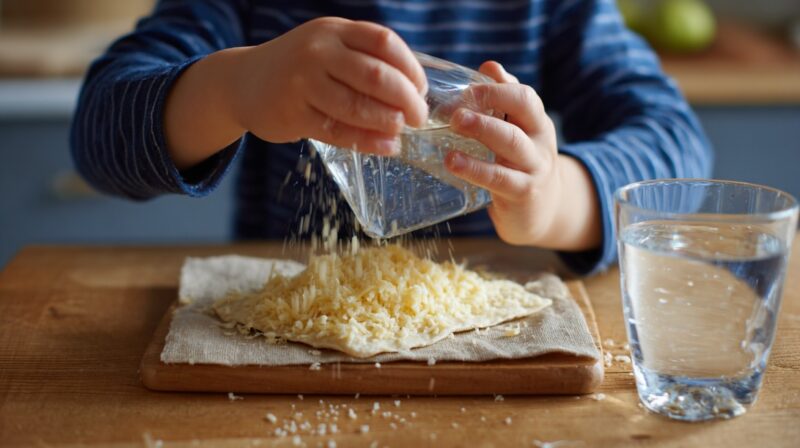
When everyone contributes, dinner transforms into a collective event.
It is often promoted that cooking together is a bonding activity, creating memories through teamwork.
Shared participation builds connection and pride in the final result.
- Let kids sprinkle cheese, fold napkins, or pour water.
- Ask guests to help with salad dressing or dessert assembly.
- Turn dessert-making into a shared project that encourages laughter.
Participation creates shared ownership of the evening.
Cooking and dining together shift the focus from performance to partnership, ensuring that dinner feels made with love, not simply served.
8. Embrace Imperfection and Celebrate Togetherness
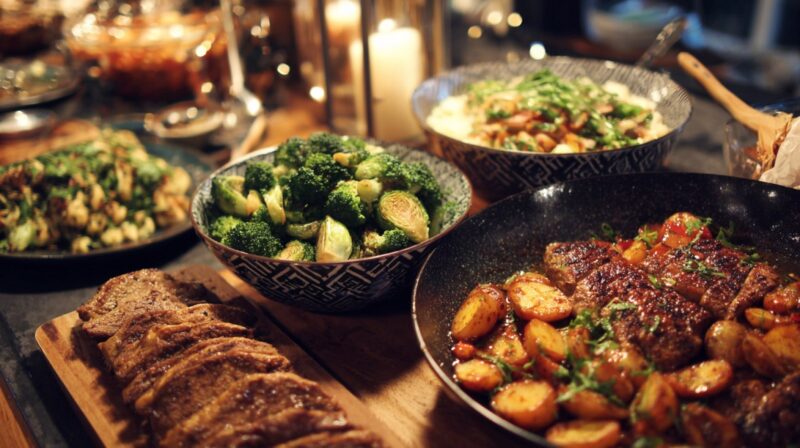
Perfection has no place at the dinner table when love and laughter fill the air.
Burned rice or mismatched cutlery doesn’t ruin a night, it humanizes it.
- Using paper napkins or mix-and-match dishes without guilt.
- Laughing off small mistakes rather than apologizing.
- Focusing the conversation on gratitude and shared moments.
- Meals become memorable because of emotion, not execution.
A warm smile across the table, a shared joke, or a slightly crooked cake can leave lasting impressions even with simple falafel wraps.
Dinner made with intention and joy always outshines perfection. Togetherness remains the most beautiful ingredient of all.
Summary
Special dinners aren’t built on luxury ingredients or ornate settings but on thought, effort, and connection.
When each meal carries intention and care, even ordinary evenings gain meaning.
Creating beauty at home is about valuing the moment itself—simple, shared, and full of warmth.
Hello, my name is Marina Vlasov. Im currently trying to change my career from my current job to becoming a chef. It is a hard road, but I feel like im coming there soon. While I enjoy preparing practically all food, from various cuisines from all over the globe, I must say that I mostly enjoy preparing vegan food. That is my strongest side. That is why I want to provide you with the best vegan food recipes on this blog of mine.

